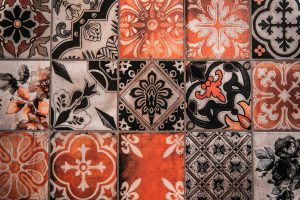NFT Wardrobes: Digital-Only Clothing Selling for Millions
As the world of fashion continues to evolve, there is a new player on the scene that is causing quite a stir – NFT wardrobes. These digital-only clothing items are selling for millions of dollars, sparking a fierce debate about the future of fashion and what it means to own a piece of clothing. With the rise of cryptocurrency and the increasing popularity of non-fungible tokens (NFTs), the fashion industry is at a crossroads. Let’s take a closer look at this new trend and what it means for the future of fashion.
The Rise of NFT Wardrobes
NFTs, or non-fungible tokens, are unique digital assets that are verified on the blockchain. They can represent anything from artwork to music to tweets, essentially giving buyers a digital certificate of ownership. NFTs have taken the world by storm in recent months, with high-profile sales reaching millions of dollars. Now, this trend has extended to the world of fashion.
Digital-Only Clothing
NFT wardrobes, or digital-only clothing, are essentially just that – clothing items that exist only in a digital format. These items can range from virtual sneakers to pixelated dresses, and everything in between. Just like physical clothing, NFT wardrobes can be bought, sold, traded, and even worn in virtual reality environments.
One of the most talked-about sales of an NFT wardrobe was the world’s first digital couture dress, which sold for a whopping $9,500. The garment, created by Dutch fashion house The Fabricant, is a one-of-a-kind digital dress that can be worn in any virtual environment. The buyer not only owns the exclusive dress but also holds the rights to display, copy, or resell the digital file.
The Debate Over NFT Wardrobes
Environmental Impact
While NFT wardrobes are undoubtedly a unique and innovative concept, they have also sparked a debate about their environmental impact. The creation and trading of NFTs require a significant amount of energy, and as the world grapples with the effects of climate change, this has raised concerns for many.
However, proponents argue that NFTs have the potential to actually reduce the carbon footprint of the fashion industry. With the rise of fast fashion and the immense amount of resources needed to produce physical clothing, the digital aspect of NFT wardrobes could lead to a more sustainable future for fashion.
Ownership and Exclusivity
Another hot topic surrounding NFT wardrobes is the concept of ownership and exclusivity. While physical clothing items can be reproduced and sold to multiple buyers, NFT wardrobes are one-of-a-kind, making them highly desirable to collectors. In the world of fashion, this could potentially shift the power from big-name brands to individual creators, as anyone with the technical skills can design and sell their own NFT wardrobes.
The Future of NFT Wardrobes
As with any emerging trend, the future of NFT wardrobes is still uncertain. However, one thing is for sure – this concept is here to stay. With the rapid advancement of technology and the increasing popularity of NFTs, we can expect to see more and more digital-only clothing items hitting the market in the coming years.
But will NFT wardrobes replace physical clothing entirely? That remains to be seen. While some see this trend as a threat to traditional fashion, others view it as an exciting new avenue for creativity and self-expression. Perhaps, in the future, we will see a blend of both physical and digital fashion, with NFT wardrobes offering a new level of customization and personalization for consumers.
In Conclusion
NFT wardrobes have taken the fashion world by storm, raising questions about the future of fashion and ownership. While the debate around their environmental impact and potential effects on the industry continues, one thing is certain – NFT wardrobes are revolutionizing the way we think about clothing. Whether you’re a staunch supporter or a skeptic, there’s no denying that this trend is one to keep an eye on.










